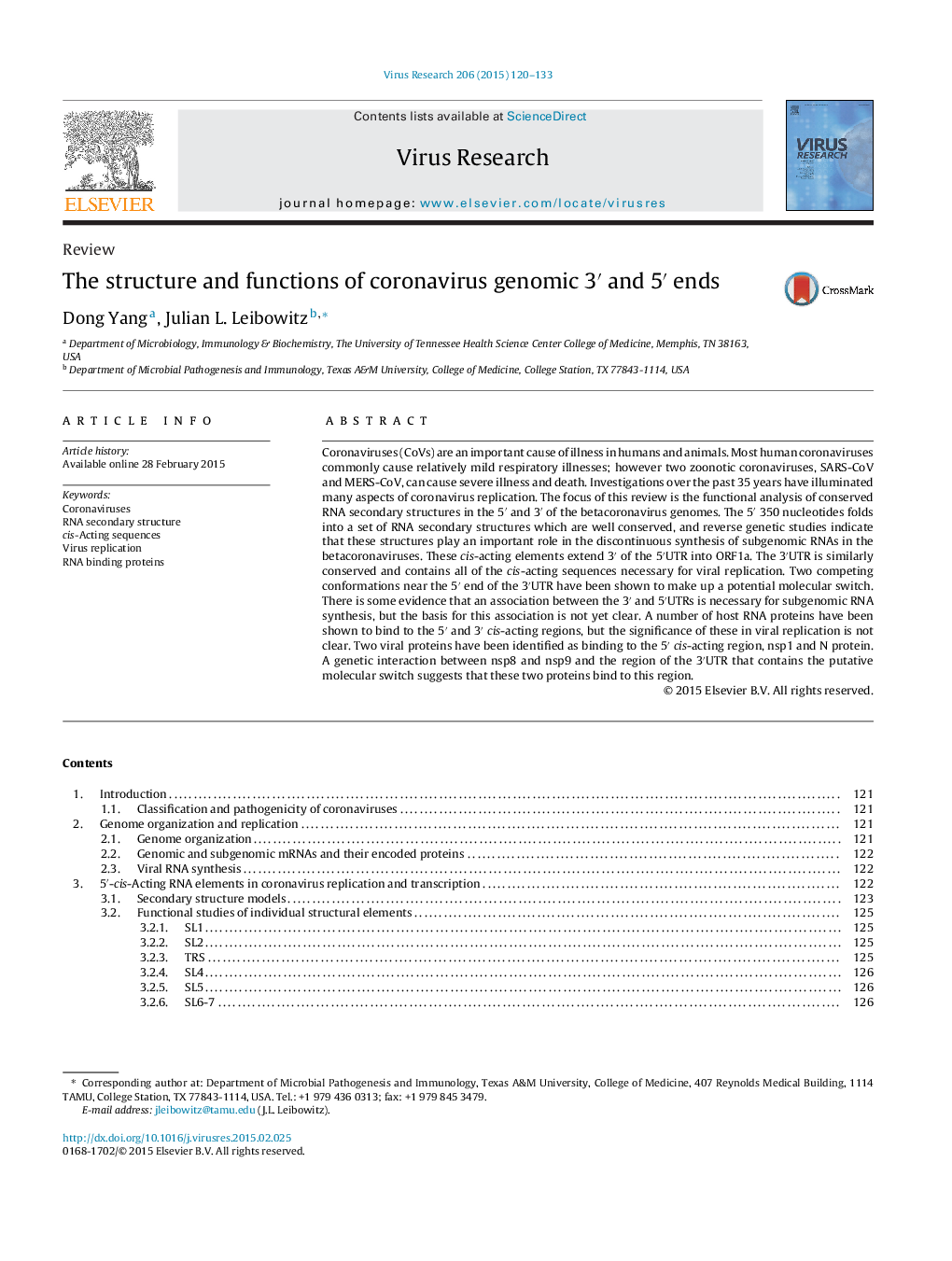| Article ID | Journal | Published Year | Pages | File Type |
|---|---|---|---|---|
| 6142241 | Virus Research | 2015 | 14 Pages |
â¢Models of conserved 5â² and 3â² betacoronavirus cis-acting RNA secondary structures are presented.â¢The 5â² cis-acting sequences required for coronavirus replication extend into the first open reading frame.â¢All 3â² cis-acting sequences required for coronavirus replication are contained in the 3â²UTR.â¢A putative molecular switch is present in the coronavirus 3â²UTR.â¢Proteins interacting with these cis-acting regions are reviewed.
Coronaviruses (CoVs) are an important cause of illness in humans and animals. Most human coronaviruses commonly cause relatively mild respiratory illnesses; however two zoonotic coronaviruses, SARS-CoV and MERS-CoV, can cause severe illness and death. Investigations over the past 35 years have illuminated many aspects of coronavirus replication. The focus of this review is the functional analysis of conserved RNA secondary structures in the 5â² and 3â² of the betacoronavirus genomes. The 5â² 350 nucleotides folds into a set of RNA secondary structures which are well conserved, and reverse genetic studies indicate that these structures play an important role in the discontinuous synthesis of subgenomic RNAs in the betacoronaviruses. These cis-acting elements extend 3â² of the 5â²UTR into ORF1a. The 3â²UTR is similarly conserved and contains all of the cis-acting sequences necessary for viral replication. Two competing conformations near the 5â² end of the 3â²UTR have been shown to make up a potential molecular switch. There is some evidence that an association between the 3â² and 5â²UTRs is necessary for subgenomic RNA synthesis, but the basis for this association is not yet clear. A number of host RNA proteins have been shown to bind to the 5â² and 3â² cis-acting regions, but the significance of these in viral replication is not clear. Two viral proteins have been identified as binding to the 5â² cis-acting region, nsp1 and N protein. A genetic interaction between nsp8 and nsp9 and the region of the 3â²UTR that contains the putative molecular switch suggests that these two proteins bind to this region.
